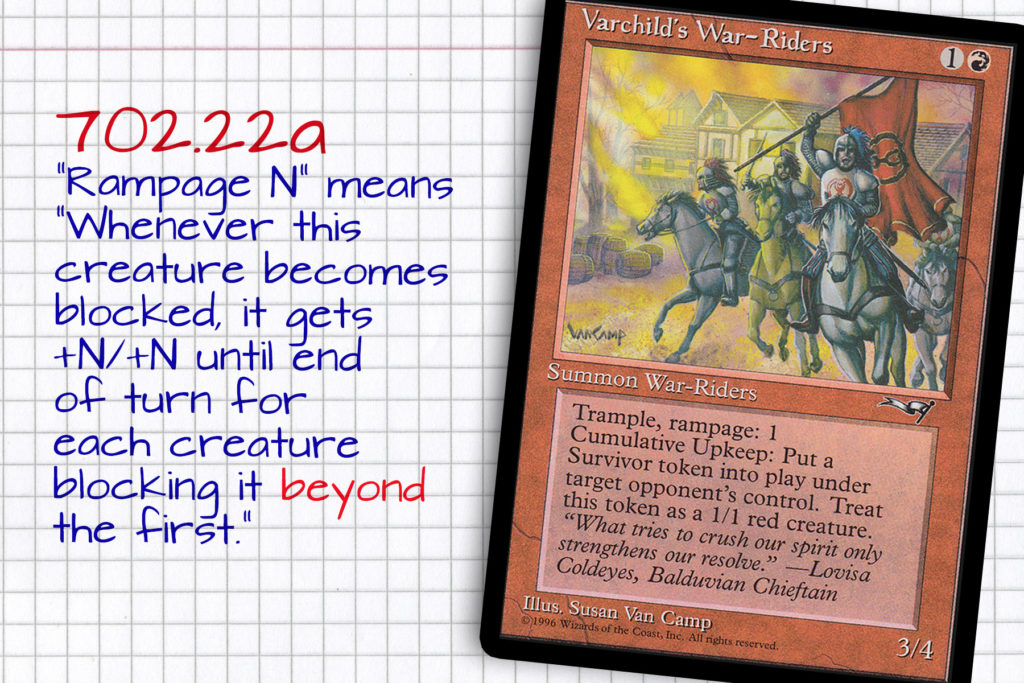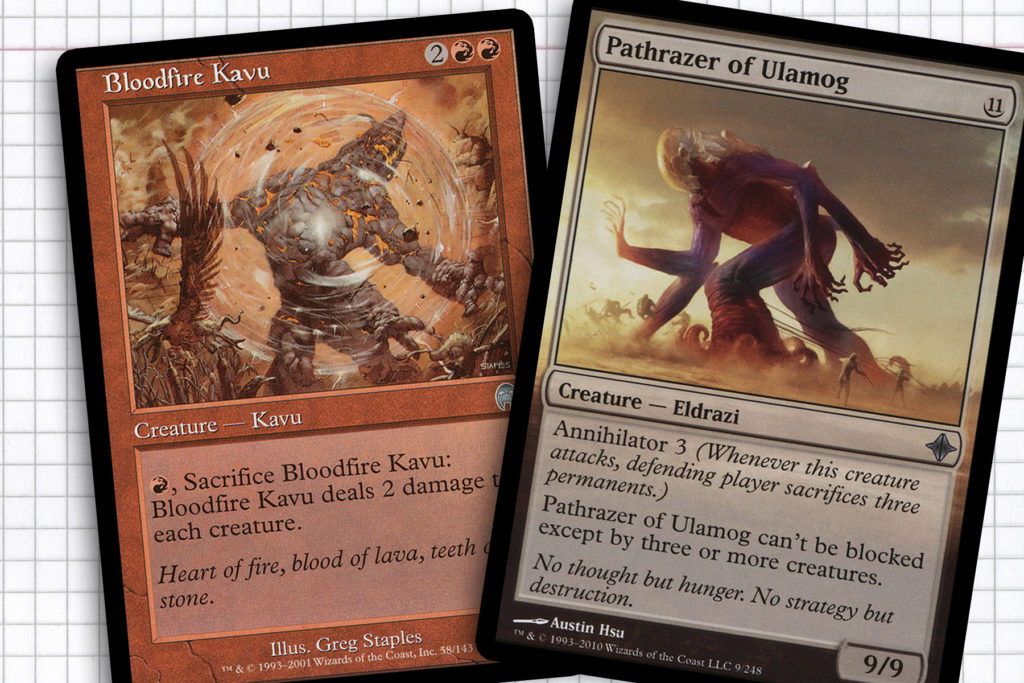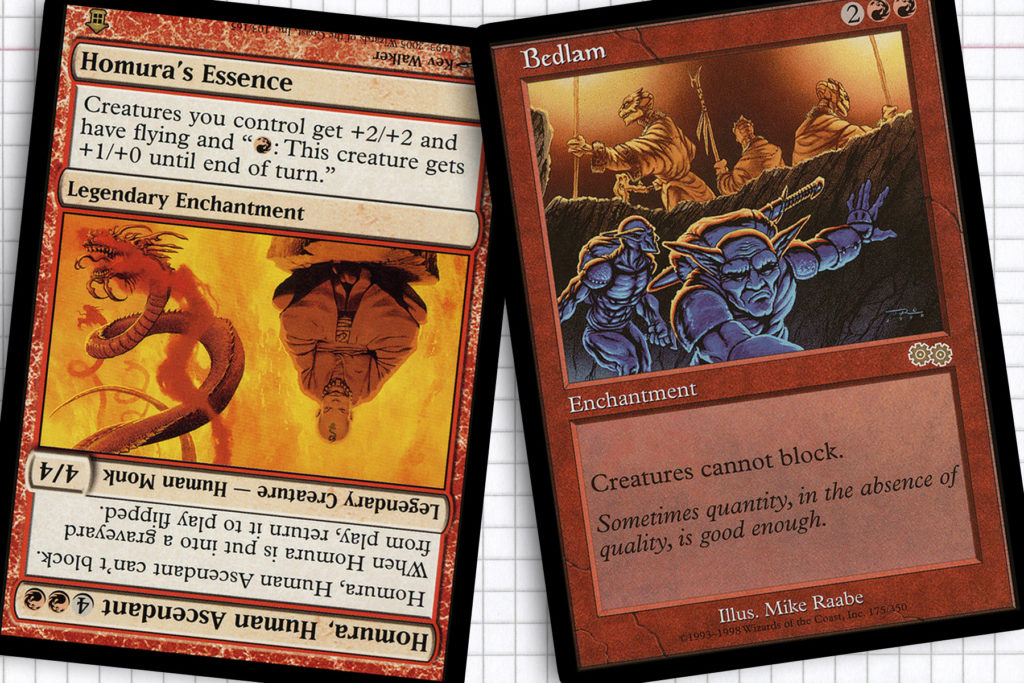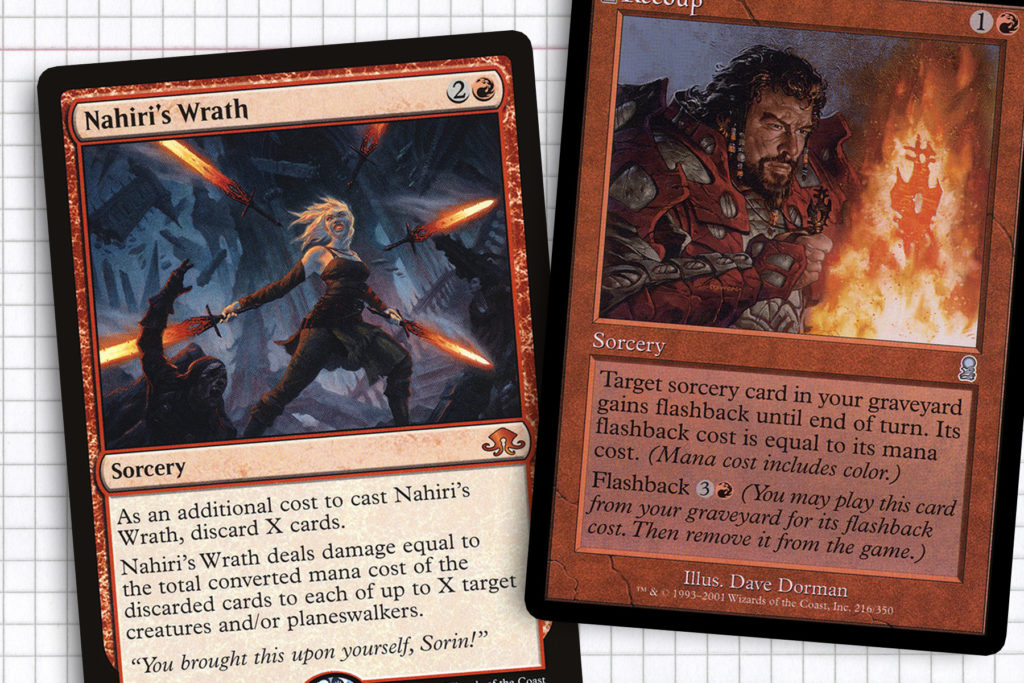Magic’s color pie is fascinating. For the most part it’s really easy to understand the surface-level pieces involving order, chaos, nature, nurture, logic, and emotion. But 15 years into the game, I still don’t know that I completely understand every nuance about it.
Magic: the Gathering is a game of conflict in most incarnations. Its art often features humanoids wrecking all manner of things, from buildings to people’s faces. Sometimes you get art depicting a moment of peace, but commonly you see planes being decimated by the goings on of centuries old interplanar rivalries. Because of this, colors get type casted: white has honorable knights slaying monsters, blue has spellcasters deep in emotionless thought, and red is all fire, brimstone, and intimidation.
In recent years some attempts have been made to bring out more of the non-rage representation of red. With Valentine’s Day is just around the corner, I wanted to explore the sweeter side of red’s color pie and be inspired by emotion besides anger. To that end, I want to cover possibly the most bittersweet of generals that reminds us that not all passion comes in the form of joy. This week will be covering none other than Feldon of the Third Path, because real men love, mourn, and cry.
Feldon of the Third Path
From a lore perspective, Feldon is character dating back to the early years of Magic. He was involved with the conflict known as The Brother’s War as a background figure and chose to stay neutral. My basic understanding is that he falls in love with Loran, an Argivian woman—see Argivian Archaeologist and Argivian Restoration—who eventually dies becoming the subject of his flavor text. From there he tries building an automaton in her place—like his card—but soon concludes that nothing would truly replace her.
My history with Feldon of the Third Path has been limited to the brief period when he was my Tiny Leaders general. But once that format collapsed upon itself, the deck sat in a box with other defunct decks, waiting to be unsleeved or converted to a flushed out 100-card deck. As a deck—even with the added deck building restrictions—Feldon proved to be enjoyable, allowing me to tap into cards like Storm Entity and Phyrexian Soulgorger each turn with limited mana investment. I was impressed, but not passionate enough about the deck to want to do anything with it.
Until now.
The goal of this deck is to pick up where that Tiny Leader deck left off, utilizing all parts of the mana curve to become devastating. We’re looking to dump creatures into our graveyard, then reanimate them one or two at a time, resulting in hasty creatures with bodies that are often worth more than the printed mana cost normally allows for. These big creatures will be primed to give hugs to your opponents, in the most fun of ways.

Minimal Upkeep
Two of the first places I looked to during the construction of my Tiny Leaders deck are also aspects I want to expand on with the open card pool: cumulative upkeep and echo. Influenced indirectly by Cosmic Larva, it seemed obvious that both of these mechanics were stapled onto creatures that were built above the curve for their mana cost in order to be safety valves stopping them from being overpowered. To Feldon, these are great creatures to have in your graveyard because their upkeep costs will never come into effect.
As an all star of my first draft of the deck, the aforementioned Phyrexian Soulgorger was a constant body swinging in to pressure my opponent, with the added bonus of being a heck of a blocker. In a similar vein, we have can also include Varchild’s War-Raider, which is far above the curve with an upkeep cost that can be used politically if we find ourselves needing to make an alliance while we have the real card in play. Cumulative upkeep has the added bonus of being an effective way to get these creatures into the graveyard if I don’t have a Faithless Looting or Burning Inquiry in my opening hand.
The bread and butter of the deck, though, is going to be echo. With Avalanche Riders, Keldon Vandals, Ghitu Slinger, and Crater Hellion all acting as repeatable forms of removal, this deck can spiral out of control and land you in the archenemy seat almost by accident. When your mono-red deck plays more like Morningtide-era Faeries, at least you have a moral victory. Moving outside of the all-purpose targets, I would recommend using Goblin Marshal and Mogg War Marshal to generate a board presence that will stick around past the end step, Stingscourger acts as a source of colorbled bounce, and Tectonic Fiend operates as your second copy of Phyrexian Soulgorger.

Making Sacrifices
They say nothing lasts forever and that often includes token creatures. Plus, Outkast taught me that love is the exception. After the minimal investment of three mana to reproduce a creature in our graveyard, we are free to view any creatures that survives combat as willing body to Fling at desired targets or offer up to Ashnod’s Altar. But the good reproduction targets will also come with their own usefulness built in, like the vertical cycle of Bloodfire Dwarf, Bloodfire Kavu, and Bloodfire Colossus, all supplying us with different levels of board wiping as we work out way up the chain. I would also advise look at Orcish Settlers, with the caveat that you consider only tapping into its power when you have a path to victory on the board or in hand, as this sets players back so far back that the game will be very unfun if it continues on for another 15 turns.
There is another side to this coin though: why worry about sacrificing your hard-earned resources when you can make your opponents sacrifice theirs instead? By reanimating creatures like Pathrazer of Ulamog, Shivan Wumpus and/or Tyrant of Discord, you can give your opponents the grueling choice of which resources they will continue the game with, all for the simple cost of three mana. I think that’s what the phrase “spread the love” is all about.

Back to Bedlam
While most of our creatures tend to have generous bodies waiting to replicated, many lack any form of evasion. In a format like Commander, a good enter the battlefield or dies trigger is only going to get you so far, which is why we need to give some consideration to including evasion or trample. Some of the easy picks are Goblin War Drums or In the Web of War to make our creatures more formidable and harder to block, but gems like Archetype of Aggression or Homura, Human Ascendant offer us trample and flying, which I was surprised to find was in very limited supply for red. Turns out trample is secondary in red.
But the ultimate form of evasion comes in a very high risk, high reward package; Bedlam. I happen to love card for its ability to bring games to a decisive end very quickly, for that reason this card is not for those with weak constitutions. As time has taught me, if you misfire on an attack, you are going to probably get taken out of the game very quickly. This is why the recent printing of Disrupt Decorum has proven to be very fruitful, as it gives you an out in case you can’t afford to take the brunt of the table’s scorn.

Moments of Impulse
The last quality of this deck that ought to be addressed is how we plan to get these behemoths into our graveyard. Luckily, this is a piece of the color pie that red excels at. Most people—even outside of Commander—are aware of Wheel of Fortune, Wheel of Fate, and Reforge the Soul. But when the chance present itself, I love giving to slot Chandra Ablaze and Nahiri’s Wrath. Red planeswalkers get a lot of flack for being subpar cards, but Chandra excels here and Wrath itself has proven to be a good source of mass removal and burn, while also being a streamlined way to fill up a graveyard.
Flashback is also our friend in this deck and cards like the aforementioned Faithless Looting are marquee cards in our discard package. But as we dive deeper, Shattered Perception does a great job of moving us through our deck, Recoup and Past in Flames allow us access to spells normally without flashback. Even Reckless Charge can offer us a surprise Feldon activation by granting him haste before the full rotation around the table. But my favorite might be Conflagrate as the nail in the coffin to close out games.
I think Feldon was a stellar design, the likes of which I don’t feel we’ve seen since in a Commander product before or since, delivering on a character from the lore that evokes a strong emotional response. I think designs like Mairsil, the Pretender and Edgar Markov are both cool designs for existing characters from the last year—showing that Wizards is starting to put some of their focus into digging up uncovered pieces of lore—but I don’t feel that they tell a complete story on just the card. As for this deck, I hope that players looking to dump creatures into their graveyard, then reanimate them will find it interesting. Heck, I hope most have already found this deck before today and have experienced the options this deck provides. I love hearing feedback, so let me know. Until next time, live, love, make mistakes, and have fun!

